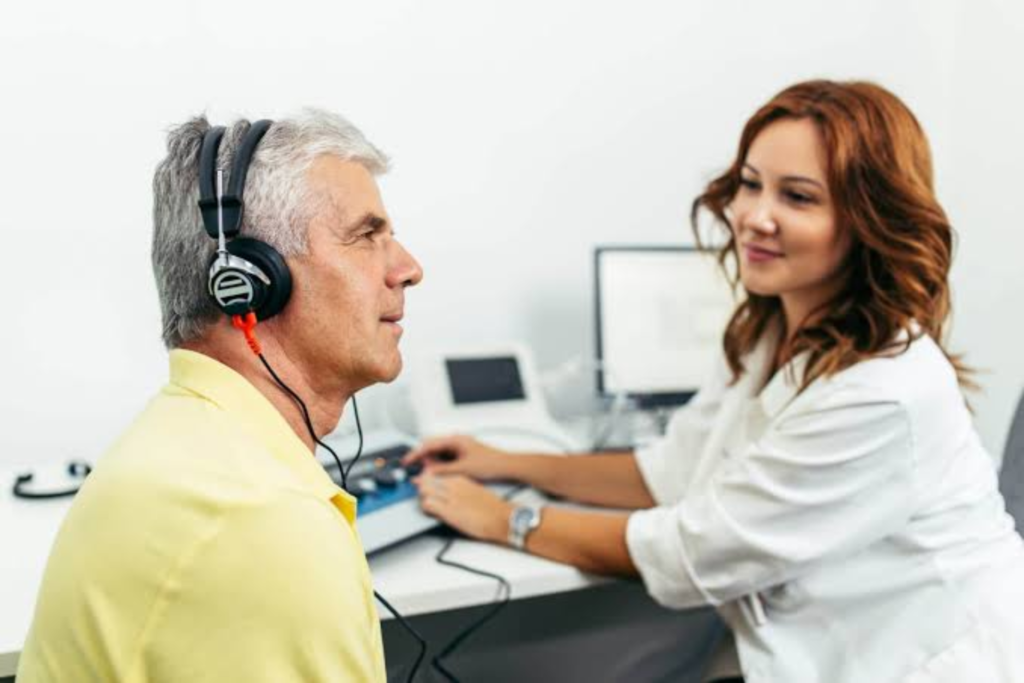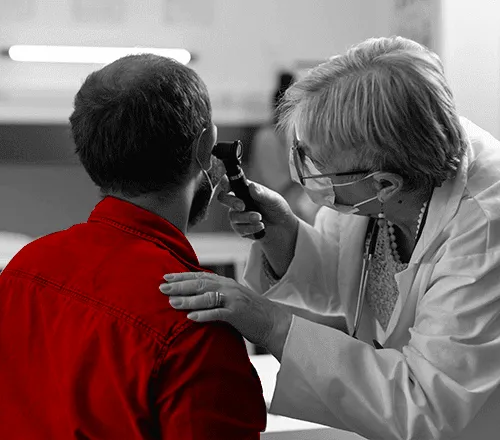When it comes to assessing hearing health, audiometry tests are among the most common and effective tools used by audiologists. Two of the most widely used types of audiometry tests are Pure-Tone Audiometry and Speech Audiometry. While both tests aim to evaluate hearing ability, they serve different purposes and provide unique insights into a person’s hearing health.
1. What is Pure-Tone Audiometry?
Pure-Tone Audiometry is a hearing test that measures your ability to hear sounds at different frequencies (pitches) and volumes (intensities). It is one of the most common tests used to diagnose hearing loss and determine its severity.
How It Works:
- You wear headphones or insert earphones and listen to a series of pure tones at various frequencies (e.g., 250 Hz to 8,000 Hz).
- The audiologist will play tones at different volumes and ask you to indicate when you hear them, usually by pressing a button or raising your hand.
- The results are plotted on an audiogram, a graph that shows your hearing thresholds for each frequency.
Purpose:
- Identifies the softest sounds you can hear at different pitches.
- Determines the type and degree of hearing loss (e.g., mild, moderate, severe, or profound).
- Helps identify whether the hearing loss is conductive (related to the outer or middle ear) or sensorineural (related to the inner ear or auditory nerve).
2. What is Speech Audiometry?
Speech Audiometry is a hearing test that evaluates your ability to hear and understand speech. Unlike Pure-Tone Audiometry, which uses pure tones, this test uses spoken words or sentences to assess your hearing.
How It Works:
- You listen to recorded or live speech through headphones or speakers.
- The audiologist will ask you to repeat words or sentences at different volumes and in the presence of background noise.
- The results measure your speech reception threshold (SRT) (the softest level at which you can understand speech) and word recognition score (WRS) (your ability to correctly identify words).
Purpose:
- Assesses how well you can hear and understand speech in quiet and noisy environments.
- Helps determine the functional impact of hearing loss on communication.
- Provides insights into the clarity of your hearing, which is not always reflected in Pure-Tone Audiometry results.
3. Key Differences Between Pure-Tone and Speech Audiometry
Purpose and Focus
- Pure-Tone Audiometry: Focuses on measuring your ability to hear pure tones at different frequencies and volumes. It provides a detailed picture of your hearing sensitivity across the auditory spectrum.
- Speech Audiometry: Focuses on your ability to hear and understand speech. It evaluates how well you can process and interpret spoken language, which is crucial for real-world communication.
Test Procedures
- Pure-Tone Audiometry:
- Uses pure tones (beeps) at various frequencies and volumes.
- Conducted in a soundproof booth to eliminate background noise.
- Results are plotted on an audiogram.
- Speech Audiometry:
- Uses spoken words or sentences.
- May include background noise to simulate real-world listening conditions.
- Results include SRT and WRS scores.
Results and Interpretation
- Pure-Tone Audiometry:
- Provides a frequency-specific assessment of hearing loss.
- Helps identify the type (conductive, sensorineural, or mixed) and degree of hearing loss.
- Speech Audiometry:
- Provides a functional assessment of hearing ability.
- Measures how well you can understand speech, which is critical for daily communication.
Applications and Use Cases
- Pure-Tone Audiometry:
- Used for diagnosing hearing loss and determining its severity.
- Often the first test performed during a hearing evaluation.
- Speech Audiometry:
- Used to assess the impact of hearing loss on speech understanding.
- Helps tailor hearing aid settings and rehabilitation programs.
4. How Pure-Tone and Speech Audiometry Work Together
While Pure-Tone and Speech Audiometry serve different purposes, they are often used together to provide a comprehensive assessment of hearing health. Here’s how they complement each other:
- Diagnosing Hearing Loss:
- Pure-Tone Audiometry identifies the presence and severity of hearing loss.
- Speech Audiometry evaluates the functional impact of hearing loss on communication.
- Tailoring Treatment Plans:
- Pure-Tone results help determine the type of hearing loss and guide treatment options (e.g., hearing aids, surgery).
- Speech Audiometry results help customize hearing aid settings and speech therapy programs.
- Monitoring Progress:
- Both tests are used to track changes in hearing ability over time.
- They help assess the effectiveness of treatments and interventions.
5. Which Test is Right for You?
The choice between Pure-Tone and Speech Audiometry depends on your specific needs and concerns:
- Pure-Tone Audiometry is ideal if:
- You suspect hearing loss and want to determine its severity.
- You need a baseline assessment of your hearing sensitivity.
- Speech Audiometry is ideal if:
- You struggle to understand speech, especially in noisy environments.
- You want to evaluate the effectiveness of hearing aids or other treatments.
In most cases, audiologists recommend both tests for a complete evaluation of hearing health.
6. Frequently Asked Questions (FAQs)
Q1: Can I take a Pure-Tone Audiometry test at home?
- While there are online hearing tests, they are not as accurate as professional Pure-Tone Audiometry conducted in a soundproof booth.
Q2: Is Speech Audiometry necessary if I already have hearing aids?
- Yes, Speech Audiometry helps fine-tune hearing aid settings and ensures they meet your communication needs.
Q3: How long do these tests take?
- Pure-Tone Audiometry typically takes 20-30 minutes, while Speech Audiometry may take an additional 15-20 minutes.
Q4: Are these tests covered by insurance?
- Many insurance plans cover audiometry tests, but it’s best to check with your provider.
Q5: Can children undergo these tests?
- Yes, both tests are suitable for children, though the procedures may be adapted for younger patients.
7. Conclusion
Understanding the differences between Pure-Tone and Speech Audiometry is essential for anyone concerned about their hearing health. While Pure-Tone Audiometry provides a detailed assessment of hearing sensitivity, Speech Audiometry evaluates your ability to understand speech, which is critical for daily communication. Together, these tests offer a comprehensive picture of your hearing health and guide effective treatment plans.
If you’re experiencing hearing difficulties or simply want to check your hearing, don’t hesitate to schedule an appointment with a licensed audiologist. Early detection and intervention can make a significant difference in your quality of life.





